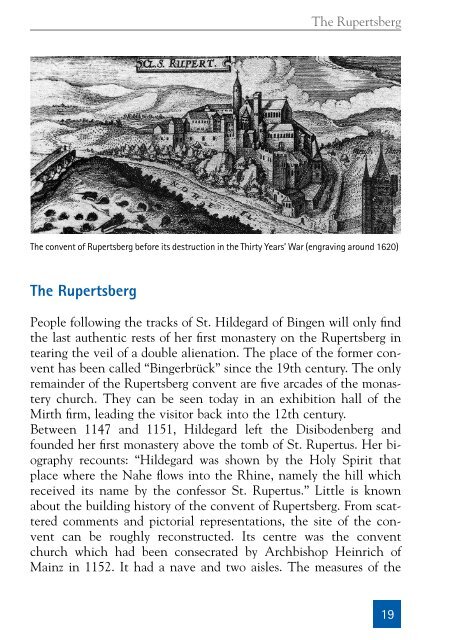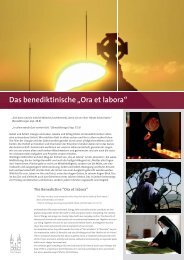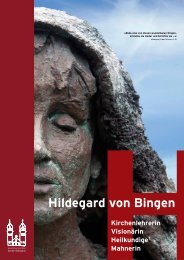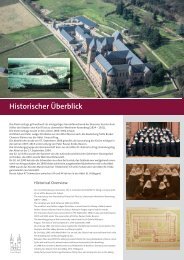Hildegard_von_Bingen_englisch
Create successful ePaper yourself
Turn your PDF publications into a flip-book with our unique Google optimized e-Paper software.
The Rupertsberg<br />
The convent of Rupertsberg before its destruction in the Thirty Years’ War (engraving around 1620)<br />
The Rupertsberg<br />
People following the tracks of St. <strong>Hildegard</strong> of <strong>Bingen</strong> will only find<br />
the last authentic rests of her first monastery on the Rupertsberg in<br />
tearing the veil of a double alienation. The place of the former convent<br />
has been called “Bingerbrück” since the 19th century. The only<br />
remainder of the Rupertsberg convent are five arcades of the monastery<br />
church. They can be seen today in an exhibition hall of the<br />
Mirth firm, leading the visitor back into the 12th century.<br />
Between 1147 and 1151, <strong>Hildegard</strong> left the Disibodenberg and<br />
founded her first monastery above the tomb of St. Rupertus. Her biography<br />
recounts: “<strong>Hildegard</strong> was shown by the Holy Spirit that<br />
place where the Nahe flows into the Rhine, namely the hill which<br />
received its name by the confessor St. Rupertus.” Little is known<br />
about the building history of the convent of Rupertsberg. From scattered<br />
comments and pictorial representations, the site of the convent<br />
can be roughly reconstructed. Its centre was the convent<br />
church which had been consecrated by Archbishop Heinrich of<br />
Mainz in 1152. It had a nave and two aisles. The measures of the<br />
19














